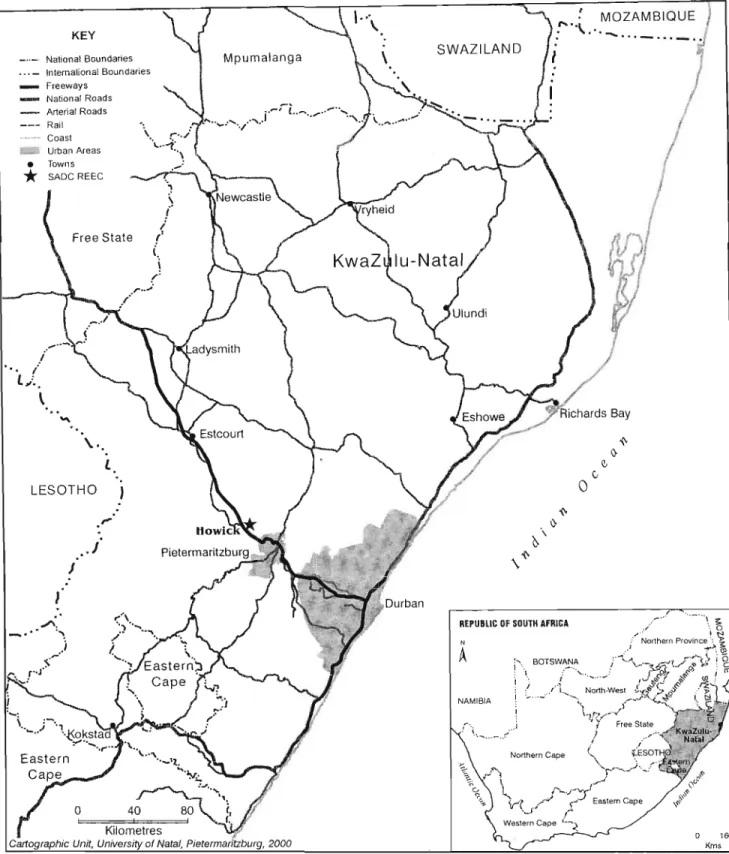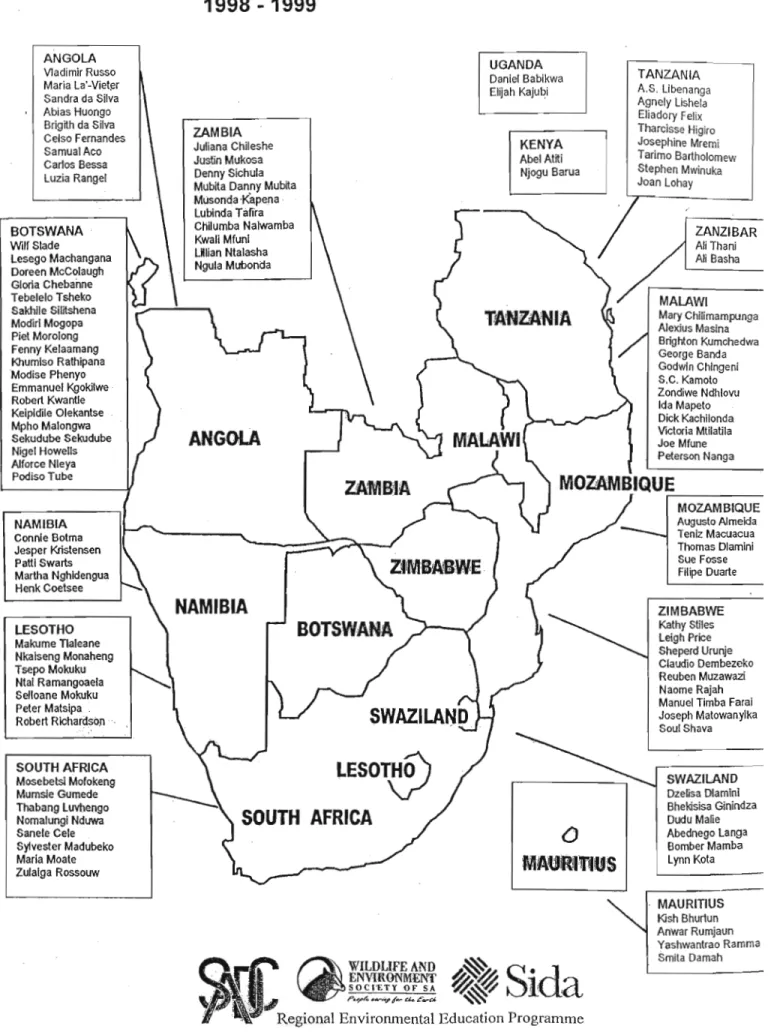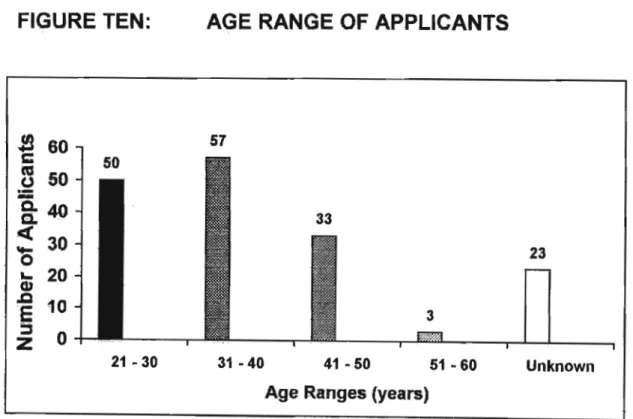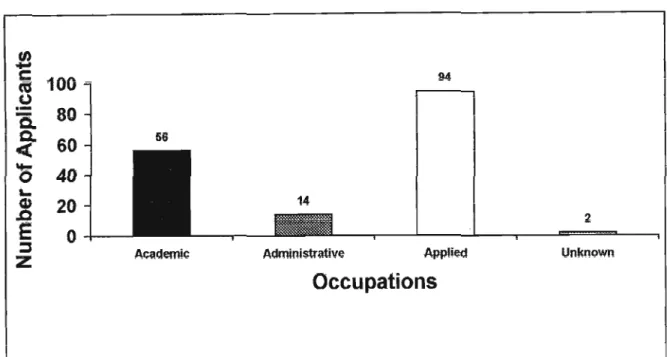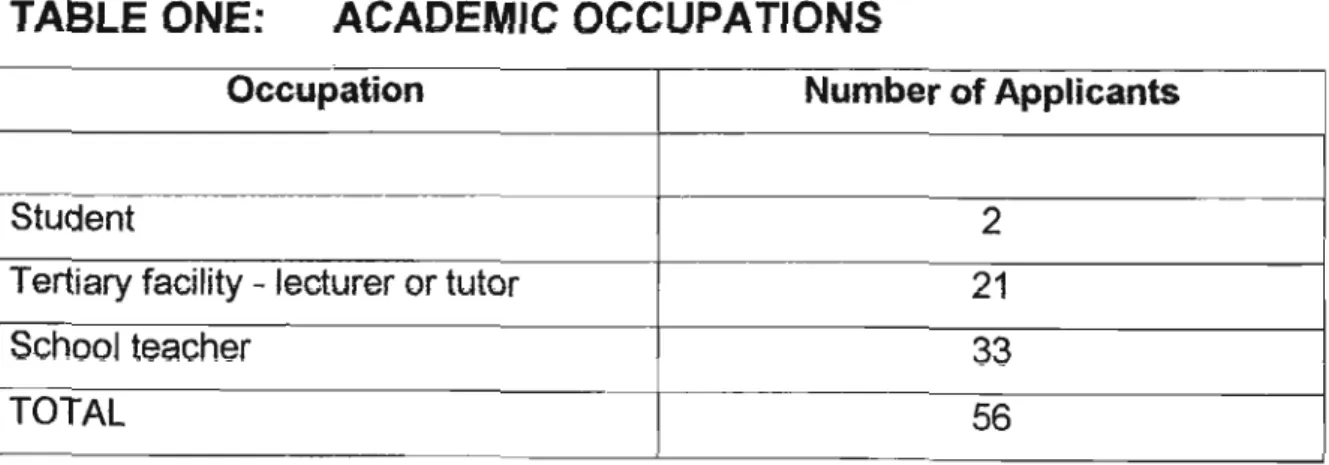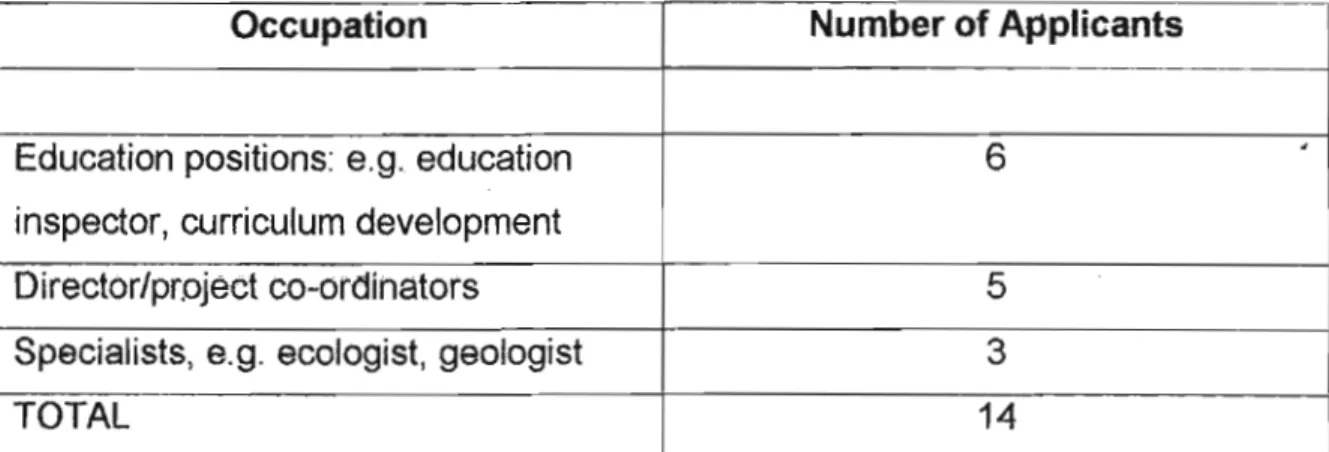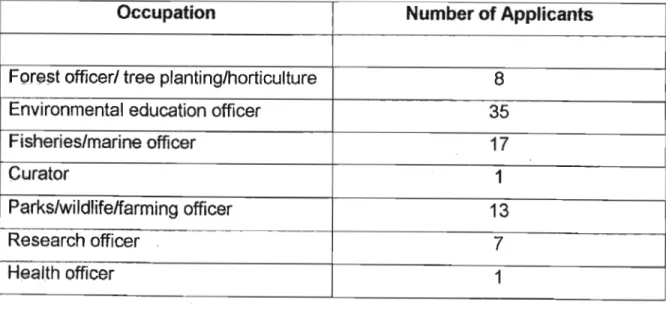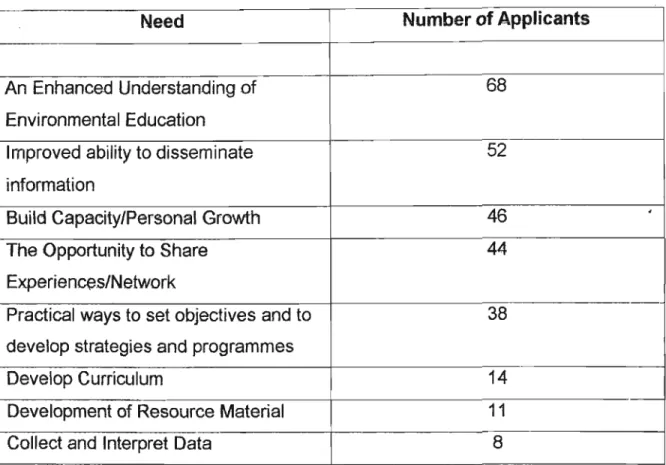The report documents the establishment of the SADC-REEP and the environmental education training it offers within the context of current thinking on environmental education processes in the region. During one of the first workshops, it was identified that there was a lack of expertise in environmental education within the SADC region. Two of the training programs developed by SADC-REEP are the Rhodes/SADC Certificate Course and the Attachment Program4.
AIMS AND OBJECTIVES OF THE RESEARCH
The objectives of the training component of the SADC-REEP are to develop curricula and training programs to increase training capacity in the region (Gronvall 1997: 6). SADC-REEP therefore sought to research environmental training needs in southern Africa (Ward 1999). The purpose of this research is to determine what environmental education needs exist in the SADC region and how these relate to education.
LITERATURE REVIEW
The ,Establishment of the SADC-REEP
The original twelve member states of SADC were: Angola, Botswana, Lesotho, Malawi, Mauritius, Mozambique, Namibia, South Africa, Swaziland, Tanzania, Zambia and Zimbabwe, with the subsequent admission of Seychelles and the Democratic Republic of the Congo. These two countries, recently admitted to SADC, are not yet part of SADC-REEP.
Lesothh South \r/
Perspectives on: The Environment
One of the first responses to the environmental crisis was to preserve wild areas by fencing them. As mentioned earlier, environmental education has been one of the most important responses to the environmental crisis. As understanding of the environmental crisis has evolved, so has the response that environmental education provides.
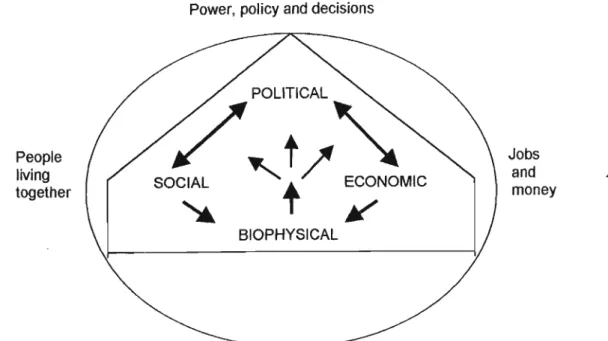
CHAPTER OUTLINES: A BRIEF OVERVIEW OF THIS STUDY
CHAPTER TWO METHODOLOGY
- RESEARCH PROCEDURE
- The Research Process
- THE LITERATURE REVIEW
- THE QUESTIONNAIRE
- THE INTERVIEWS
- Evaluation'
- ANALVSIS OF THE APPLICATION FORMS
- Information Provided by the Application Form
- Application Requirements
- CONCLUSION
- AN OVERVIEW OF THE RHODES/SADC CERTIFICATE COURSE
This report made ten recommendations for the continued success of SADC-REEP. Parker and Murray have just completed the mid-term review of SADC-REEP. A copy of the application form for the Rhodes/SADC Certificate Course is available in Appendix E.
LESO~
ANGOLA V1adimir Russo Maria La'-Vietj:!r Sandra da Silva Abias Huongo Brigith da Silva Celso Fernandes SamuatAco Carlos Bessa Luzia Rangel.
SOUTH AFRICA
Curriculum Development: Programmes and Resources
- AN OVERVIEW OF THE ATTACHMENT PROGRAMME
- RHODES/SADC CERTIFICATE COURSE CURRICULUM
- Theme Four
- RESULTS OF THE QUESTIONNAIRE
- Recommendation Four
- Recommendation Five
- RESULTS OF THE INTERVIEWS
- A Summary of the Key Issues Raised by the Interviews
- RESULTS OF THE CONTENT ANALYSIS OF THE APPLICATION FORMS
- SUMMARY
- REVISITING THE OBJECTIVES
- THE ESTABLISHMENT OF THE SADC-REEP
- A PROFILE OF APPLICANTS TO THE RHODES/SADC CERTIFICATE COURSE
- THE ARTICULATED ENVIRONMENTAL EDUCATION TRAINING NEEDS
- Collection and Interpretation of Data
- THE CURRENT ORIENTATION OF THE SADC-REEP TRAINING
- CONCLUSION
- RESEARCH OVERVIEW
- RECOMMENDATIONS
- Recommendation One
- Recommendation Two
- Recommendation Three
- Recommendation Seven
- Recommendation Ten
- CONCLUDING COMMENTS
The text looks at some of the definitions of environmental education and the idea of environmental education as a process. The E-mail is the official newsletter of the SADC-REEP and costs about R20 per copy to produce. Autman believes that the environmental education training needs of the SADC region are those of the development of action competence.
Chilumba is interested in developing materials for environmental education and was introduced to SADC-REEP through a brochure from the Zambian SADC National Network Representative. Media skills training can be addressed through SADC-REEP training programs. The graph shows that all twelve SADC countries that are part of the SADC-REEP have candidates for the course (white).
There appears to be a need for greater awareness of the SADC REEP in the region in general. Theme four of the core texts for the Rhodes/SADC certificate course addresses the issue of developing environmental education programmes. It is often argued that environmental education is one of the most important answers to the environmental crisis.
One of the objectives of SADC-REEP is to establish training programs for environmental educators in the region. This broader understanding of the environment and educational processes is evident in the curriculum of the training programs offered by KZHAJ-REEP. Therefore, recommendations are provided for the continuous improvement of the current training conducted by SADC-REEP.
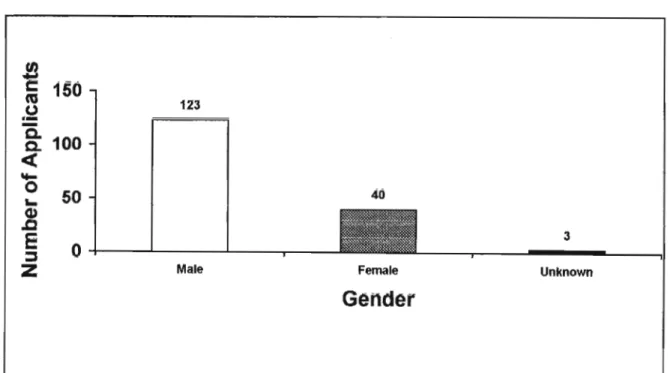
PERSONAL CORRESPONDENCE
3 How have you been able to use what you have learned on the course in your country and work? 4 Have you been able to contribute to the development of SADC-REEP in any way, if so how. 3 How do you think you will be able to use what you have learned on the course in your country and work.
5 What other training needs do you think the SADC-REEP could seek to respond to? For the second month of the course we move to the Umgeni Valley Project in KwaZulu-Natal. The first month of the course is spent at the Department of Education at Rhodes University in Grahamstown.
During the first two months of the course; participants will work with course coordinators, guest lecturers and each other to develop a better understanding of their work and environmental education. Environmental education (EE) is seen as a process of social change in response to the environmental crisis and not simply as a. It provides a structured framework and resources around which participants can improve their skills to support, initiate and improve environmental education in their environment.
Rhodes University and the SADC Regional Environmental Education Program are again offering a course leading to an international certificate in environmental education.
INTERNATIONAL
Here we have access to a number of important initiatives, including the national office of the Wildlife and Environment Society of South Africa, the SADC Regional EE Centre, an educational center that holds practical courses for children and adults, and Share-Net, where low-cost educational resource materials are produced. A famous center of education, this small town was once the border between the British and the AmaXhosa. A range of learning opportunities including lectures, group work, discussions, field trips and seminars enable participants to develop their skills in a rich and supportive learning environment.
In this course, 'environment' is understood as a concept that refers to the interaction between the biophysical and the economic, political and social dimensions of our living worlds.
EDUCATION
I include here details about how I can share my experience of the course with others in my work context. Please check my application and send details about the outcome and preparations of the course to the following address where I can be contacted between January and July 2000. Please ensure that the application form and supporting documents reach the course coordinator before 31 January 2000.
Applicants will be notified of the outcome of the selection procedure during the last week of April 2000. Rhodes University and the SADC Regional EE Program will provide full scholarships to the 12 students selected to participate in the course. Three assignments are completed during the course, and one assignment is completed after the course.
On successful completion of the course, which includes the workplace-based curriculum project, participants will receive the Rhodes University/SADC International Certificate in Environmental Education. The course is open to participants from Southern, Eastern and Central Africa with an appropriate tertiary qualification and sufficient experience in education. WHAT TO EXPECT. Attracting the trainees will introduce them to important issues and development projects that evoke different educational responses.
The four field trips that take place during the course provide an opportunity for textual expression of the ideas explored in the course.
COURSE LOGISTICS
WHO SHOULD ATTEND THE LEARNING EXPERIENCE
COURSE CONTENTCOURSE AIMS
BACKGROUND
IUCN
SH ELL / WESSA' Environmental
TO BRING
CONSENT AND INDEMNITY
BOOKING SLIP
TRAINING OPTIONS
ENVIRONMENTAL EDUCATION
Four-day environmental Educator's courses
Environmental Education in/as Praxis
Visitorship / Attachment Programme
CONTENTS-
CERTIFICATE·
OURSE·
THE 'REGIONAL~ EE PROGRAMME
Areas of Interest Including Biodiversity Loss, Community-Based Natural, Solutions Management, School-Based Environmental Education: Materials and Curriculum Development, P9 Policy and Policy Development, Urban and Industrial Environmental Management, Environmentally Oriented Methods and Processes.,. The orientation to curriculum development as an appropriate learning process and the. nature of the learning, opportunities continued until the success of the 1998 Rhodes University / SADC International. Building participants' experience that we explored. the concept of 'environment', as a social construct·. and the environmental crisis as tb,e interrehitionship be1;Weenbiophysical,ec=Ononi~c; social and political problem$. series of environmental fact sheets,~ntopics relevant to '. issues were explored~dthroughanl}Ii1byr of field -. trips and presentations by course participants and. others: EE practitioners from the region.
Environmental educational methods and processes were the focus of a workshop, and all participants had to develop and run a workshop on an EE method of their choice. Workshop focus~doneP~rcipative Rural assessments as an E-method, setup and:. operation of environmental clubs and evaluation within processes. The final assignment is a homework assignment, short descriptions of which follow with the participants' contact information on the next two pages.
By setting aside the first two days of the course to hear everyone's stories, we were able to identify and clarify. theptofe~sional experience and expertise in the c9urse. The development of teaching programs which . draw~.'in andre$pgnd~to.p~rtiCipants' .. expenses and e,xperbseISa'key, itheRh~de~Univerl)iiYlSADC principle. To make this course together;. the coordinators carefully .' , reviewed course applications highlighting key areas of interest, showing descriptions of 'the';.current applicants and their motivation for bell, lg on the.
1999,CERTIFICATE· COURSE .PARTICIPANTS
EE Officer at Malaula Nature Reserve: educates visitors, produces educational resources and works with neighboring communities; Home assignment: Develop an EE program focused on aquatic plants. Instructor in Extension and EE at Mpwepwe College of, Fisheries: Teaching, School Leavers, Communities and Upgrading of Duty Officers, Home Assignment, 'Develop a tun-fculum for a two-year environmental education program on.
WHOSE POLICY IS-ITt
ENVIRONMENTAL ED.UCATION 'POLICY
This program assumed that a single policy would work for all SADC countries and did not take into account the diversity of local needs and different countries. This current policy process is a good example of the complexity involved in terms 9ftime, the need to involve all actors, and the influence of the.
INDIGENOUS PLANT
On the other hand, the need for the product sometimes exceeds the process, and the quality of the product and commitment to it is lost. The context is dynamic and what might be a priority may have changed at some point. Likewise, 'pqlicities' are limited to political and environmental conditions. The massive demand for bark, roots, and whole plants from wild populations causes an increase in the population numbers of some species and can lead to numerous extinctions.
The Hilltop nursery in the HIuhluwe-' - UmfoloZi National Park has the goal of sustainable medicinal plant growth, g in traditional healers,' (izingyanga) homesteads. They also felt that the nurse's seat in the park would act as a deterrent against theft. School groups are encouraged to visit and learn more about the traditional medicinal plants.
Each year, thousands of native plants are collected from bushveld, grasslands and forests, putting severe pressure on the species collected. The flora of many regions has been dramatically illuminated by an invasion that has led to the near extinction of plant and animal ecosystems that had long provided humans with their basic needs.
ENVIRONMENTAL
MORE'A.TTA.CHMENTS' VISIT THEC!NTRE
ATTACHMENT PROGRAMME
REPRE.JENTATIVES WORIUHOP
NATIONALEE WORI(IHOPS ~
NATIONAL EE WORKSHOP • ZIMBABWE
RHODES UNIVERJlTY / SADC
INTERNATI()NAL CERTIFIC~1E IN - ENVIRONMENTAL EDUCATION
ENVIRQNMENTAL EDUCATORS COURSES,-
I 'ENVIRONMENTAL EDUCATION
INDIGENOUS KNOWLEDGE WORKSHOP
LESOTHO
